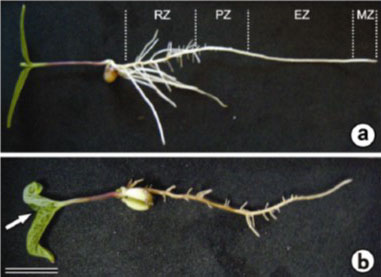Arsenic can be an aggressive word. Does it trigger images of a skull and crossbones label on an old apothecary bottle, or foggy clouds of pollution in the air? Either way, most people register that arsenic is not a positive thing. And, accumulation of this element in soil, plants and people is even worse. That is why it is important for fertilizer applications to contain arsenic levels that are as low as possible.
Arsenic is a chemical element occurring in metals that can be found in soils and is harmful to healthy plant growth. While the levels of arsenic vary from region to region, the safest way to avoid arsenic toxicity in plants is to not add additional levels through fertilizer application.
How to avoid high arsenic levels:
- Analyze pesticide ingredients
- Use “clean” fertilizer ingredients
In the past, high arsenic levels have been attributed to pesticide use, but today the culprit lies more with contaminated fertilizers. Granubor® from U.S. Borax is a boron fertilizer that is refined to meet the stringent requirements of the bulk blended fertilizer industry.
Granubor was developed with arsenic levels in mind, to contribute effective nutrients to plants without harming the soil biome. According to a test performed at the U.S. Borax Quality Lab in Boron, California, Granubor contains the least amount of arsenic levels compared to five competitors on the market.

Arsenic contamination results in severe growth damage in plants root and shoot development—resulting in stunted root health.

Arsenic effect in nutrient solution on the root of Cajanus cajan: A control on the top, and B as treatment (1.5 mg L-1) on the bottom
A: Normal root with several lateral roots in the ramification zone of the taproot.
B: Brownish roots with unusual, short lateral roots distributed along all the taproot.
Source: Pita, et al (2015)
Regulations around arsenic use vary from country to country, but regardless of legality, the harm of additional arsenic levels greatly outweigh the desired outcome of the fertilizer.
Understanding the ingredients and micronutrients in a fertilizer, along with regularly testing soil samples, are the best way to manage arsenic levels. Soil contamination and high accumulation are the warning signs the soil is becoming saturated with toxic levels of arsenic. So whether the label has a skull and cross bones on it or not, knowing fertilizer ingredients is the best way to ensure safe plant and soil health.
Make a change to cleaner, purer fertilizer ingredients by working with your regional U.S. Borax representative.
Resources